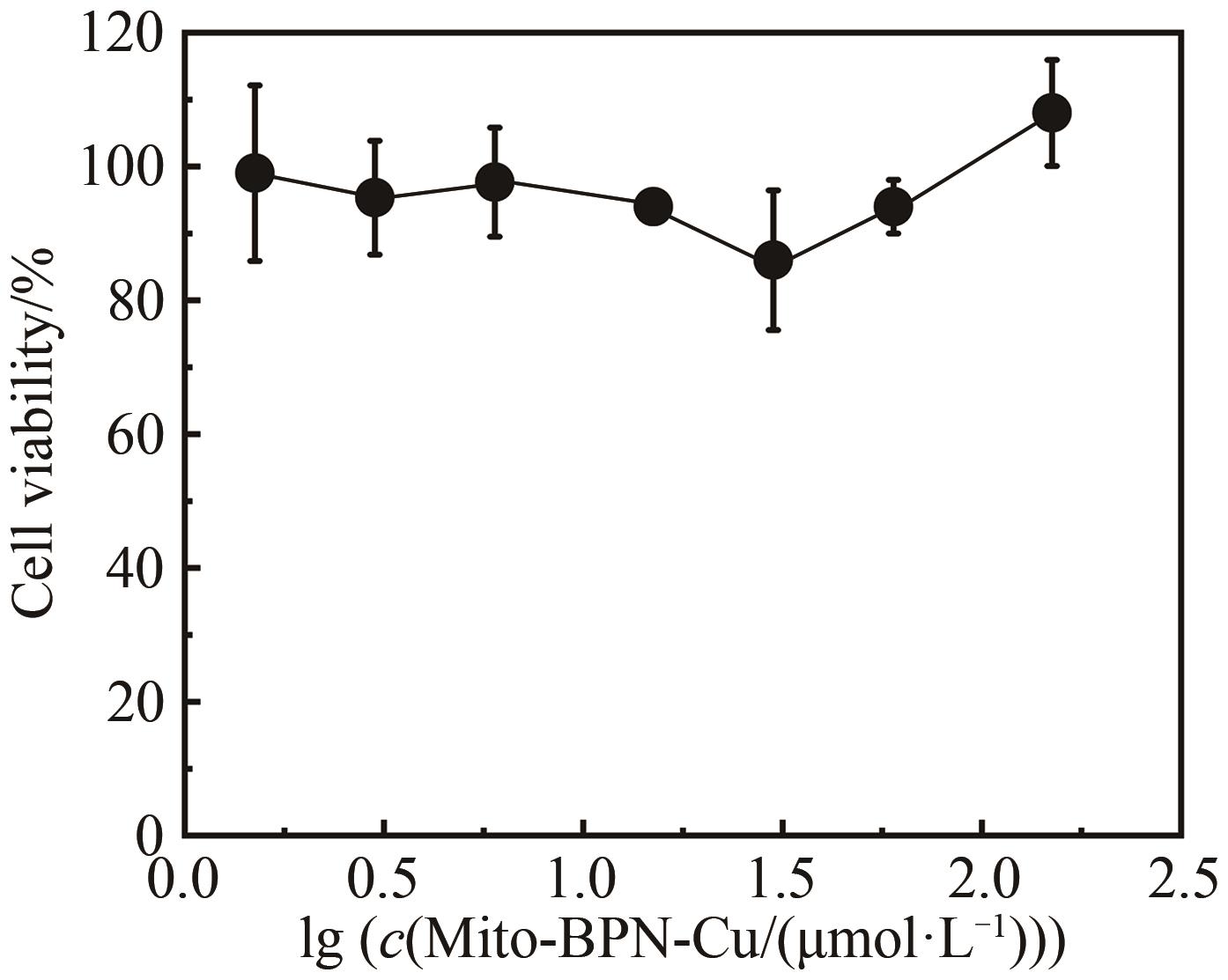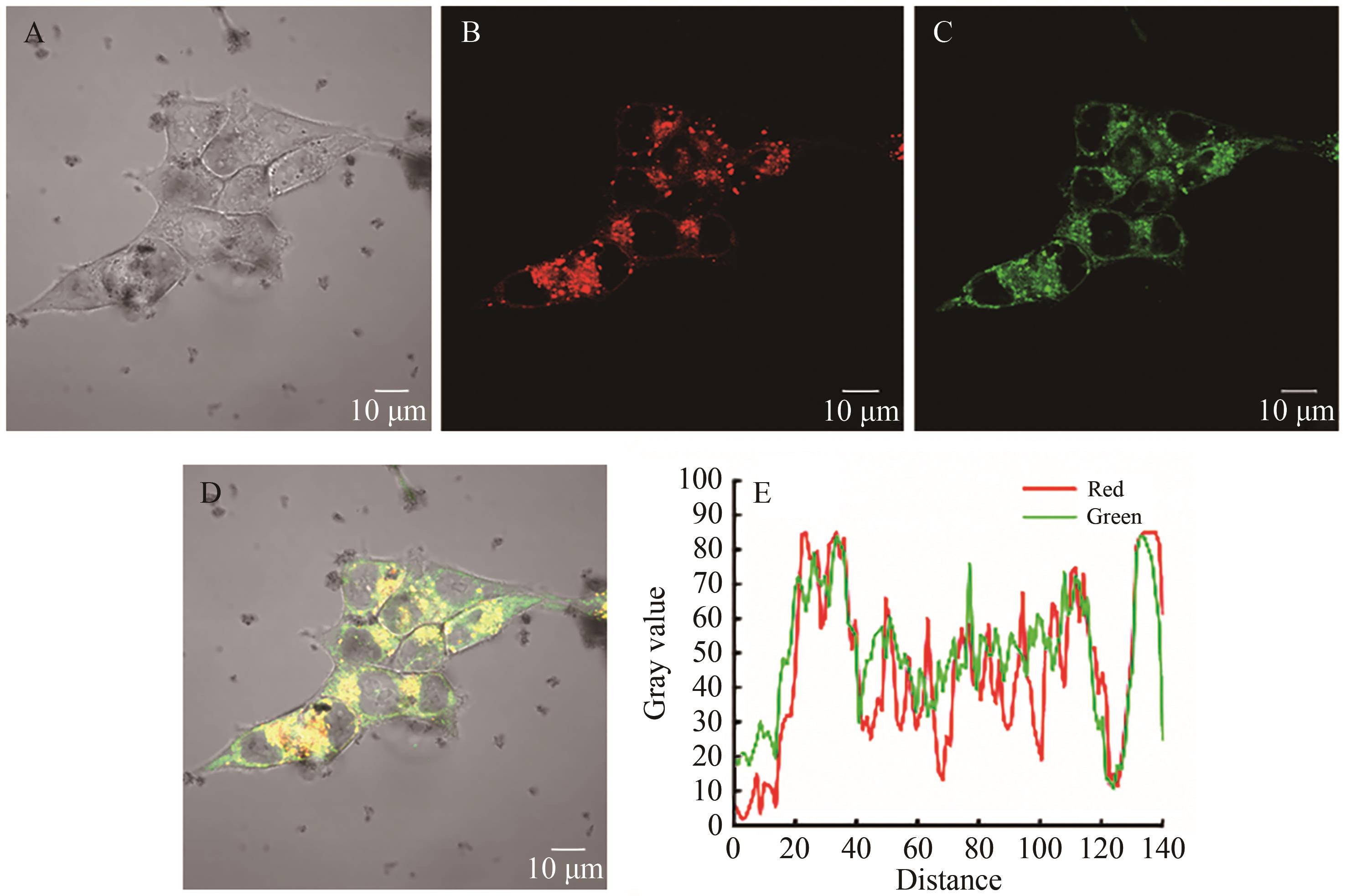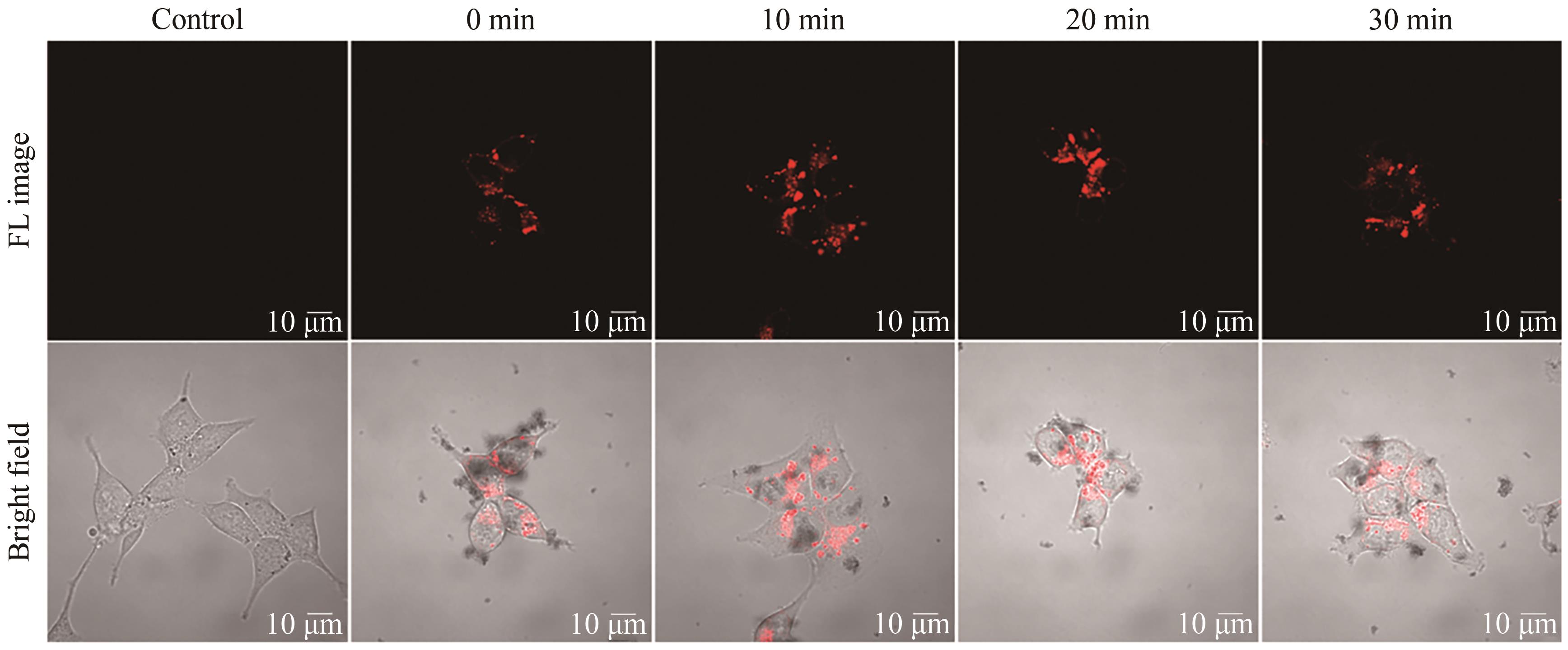
Chinese Journal of Applied Chemistry ›› 2025, Vol. 42 ›› Issue (2): 192-200.DOI: 10.19894/j.issn.1000-0518.240220
• Full Papers • Previous Articles Next Articles
Synthesis and Cell Imaging of a Near-Infrared Fast Responsive Hydrogen Sulfide Fluorescent Probe
Chang-Jiang GAO, Xin HUANG, Ya-Yang TIAN, Hai-Feng YU( ), Xiao-Bo WANG(
), Xiao-Bo WANG( )
)
- School of Pharmacy,Xianning Medical College,Hubei University of Science and Technology,Xianning 437100,China
-
Received:2024-07-18Accepted:2024-12-23Published:2025-02-01Online:2025-03-14 -
Contact:Hai-Feng YU,Xiao-Bo WANG -
About author:eas7on@163.com
yu_hf090556@163.com;
-
Supported by:Xianning Natural Science Foundation(2023ZRKX087)
CLC Number:
Cite this article
Chang-Jiang GAO, Xin HUANG, Ya-Yang TIAN, Hai-Feng YU, Xiao-Bo WANG. Synthesis and Cell Imaging of a Near-Infrared Fast Responsive Hydrogen Sulfide Fluorescent Probe[J]. Chinese Journal of Applied Chemistry, 2025, 42(2): 192-200.
share this article

Fig.2 (A) UV-Vis absorption spectra of Mito-BPN-Cu in different solvents; Fluorescence emission spectra of Mito-BPN-Cu in different solvents (B) and in pure acetonitrile system (C), respectively
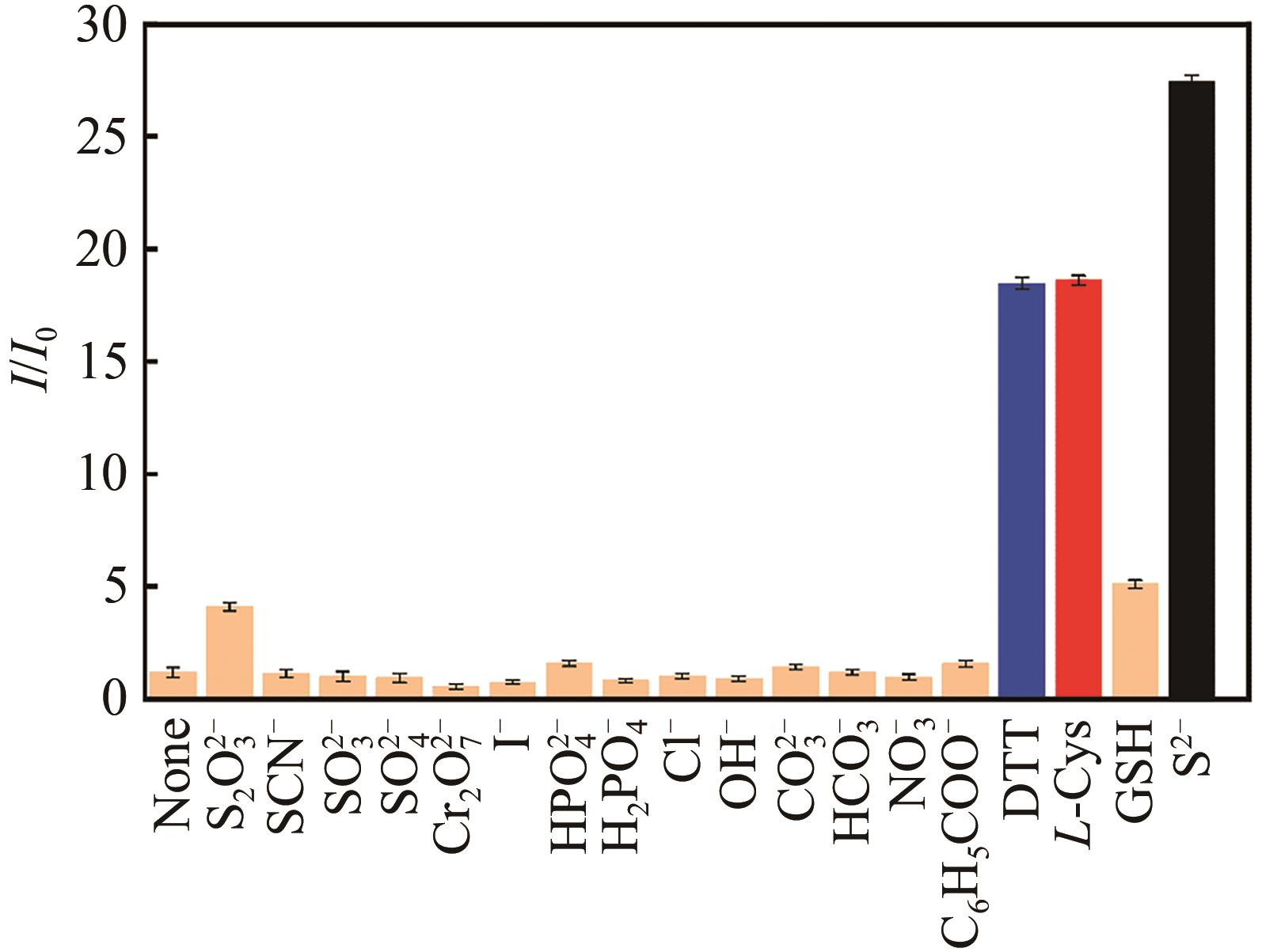
Fig.3 Bar plots of fluorescence intensity ratios I/I0 before and after the addition of H2S and its competing substances to the Mito- BPN-Cu acetonitrile solution

Fig.4 (A)Temporal plot of fluorescence intensity in reaction of the probe with DTT (100 μmol/L); (B)Temporal plot of fluorescence intensity after reaction of the probe with L-Cys (100 μmol/L); (C) Temporal plot of fluorescence intensity after probe and Na2S (100 μmol/L)
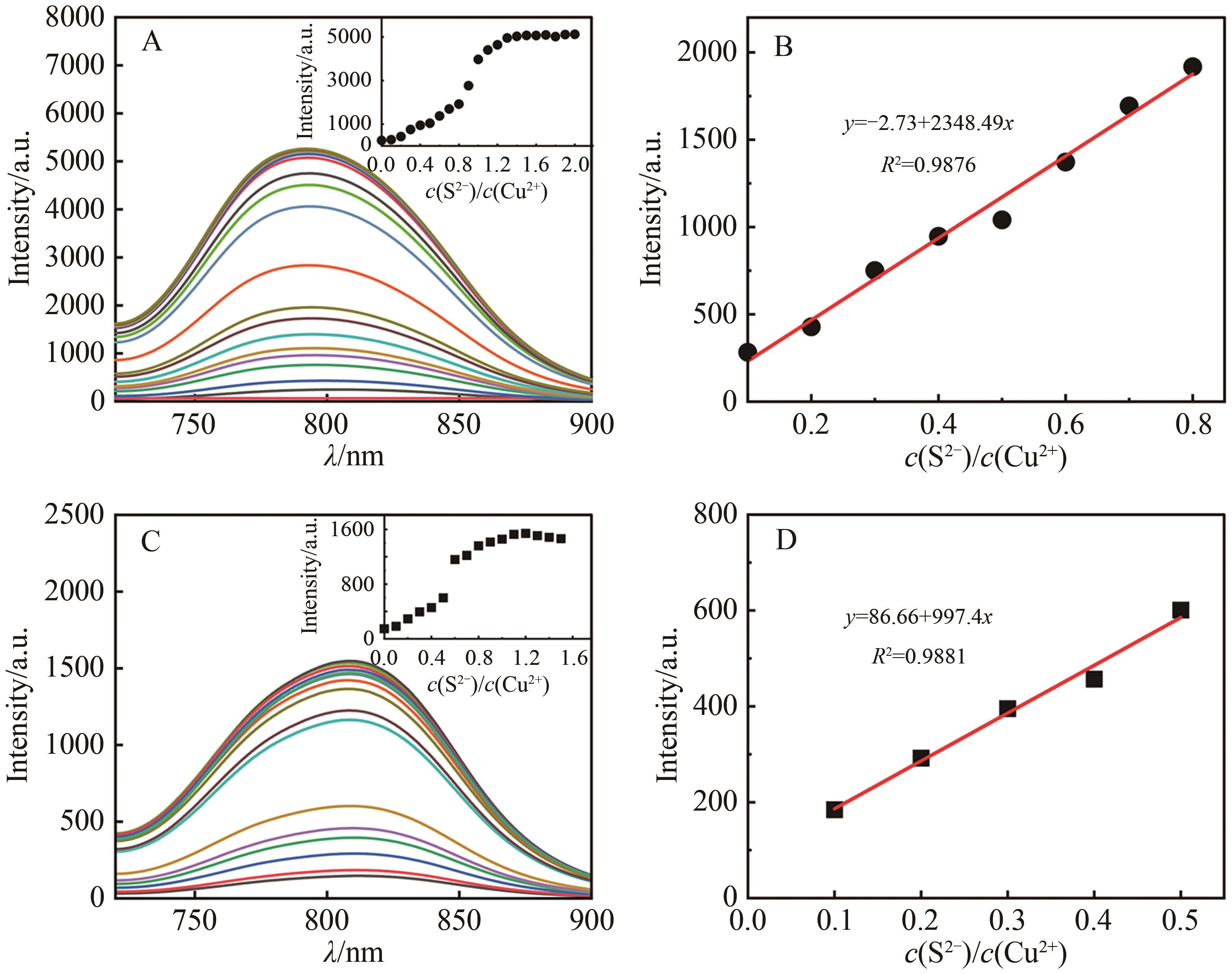
Fig.5 (A) Fluorescence emission spectrum of H2S-titrated Mito-BPN-Cu (acetonitrile solvent); (B) Linear plot of H2S-titrated Mito-BPN-Cu(acetonitrile solvent); (C) Fluorescence emission spectra of H2S-titrated Mito-BPN-Cu (V(acetonitrile)∶V(water)=1∶1); (D) H2S titration Mito-BPN-Cu (V(acetonitrile)∶V(water )=1∶1) of the linear diagram
| 1 | AROCA A, GOTOR C, BASSHAM C D, et al. Hydrogen sulfide: from a toxic molecule to a key molecule of cell life[J]. Antioxidants, 2020, 9(7): 621. |
| 2 | SHIBVYA N, KOIKE S, TANAKA M, et al. A novel pathway for the production of hydrogen sulfide from D-cysteine in mammalian cells[J]. Nat Commun, 2013, 4: 1366. |
| 3 | 常贵全, 武韧, 李鸿珠. 硫化氢在糖尿病血管内皮细胞功能障碍中的作用及机制[J]. 中国生物化学与分子生物学报, 2020, 36(11): 1281-1287. |
| CHANG G Q, WU R, LI H Z. The roles and mechanisms of hydrogen sulfide in the pathogenesis of diabetic vascular endothelial dysfunction[J]. Chin J Biochem Mol Biol, 2020, 36(11): 1281-1287. | |
| 4 | OU Q, QIAO X, LI Z, et al. Apoptosis releases hydrogen sulfide to inhibit Th17 cell differentiation[J]. Cell Metab, 2024, 36(1): 78-89. |
| 5 | LIN H, YU Y, ZHU L, et al. Implications of hydrogen sulfide in colorectal cancer: mechanistic insights and diagnostic and therapeutic strategies[J]. Redox Biol, 2023, 59: 102601. |
| 6 | HERRALD A L, AMBROGI E K, MIRICA K A. Electrochemical detection of gasotransmitters: status and roadmap[J]. ACS Sens, 2024, 9(4): 1682-1705. |
| 7 | ZHAO Y, YANG Y, CUI L, et al. Electroactive Au@Ag nanoparticles driven electrochemical sensor for endogenous H2S detection[J]. Biosens Bioelectron, 2018, 117: 53-59. |
| 8 | SLOWINSKI D, SWIERCZYNSKA M, GRZELAKOWSKA A, et al. Hymecromone naphthoquinone ethers as probes for hydrogen sulfide detection[J]. Dye Pigm, 2021, 196: 109765. |
| 9 | RANJANA M, RASHMI M K, DHANYA S. Small molecule optical probes for detection of H2S in water samples: a review[J]. ACS Omega, 2024, 9(13): 14672-14691. |
| 10 | THOMPSON R, PERRY J D, STANFORTH S P, et al. Rapid detection of hydrogen sulfide produced by pathogenic bacteria in focused growth media using SHS-MCC-GC-IMS[J]. Microchem J, 2018, 140: 232-240. |
| 11 | KAYLIN G F, MICHAEL D P. Activity-based fluorescent probes for hydrogen sulfide and related reactive sulfur species[J]. Chem Rev, 2024, 124(7): 4124-4257. |
| 12 | CHEN Y, BAO J, PAN X, et al. A near-infrared fluorescent probe with large stokes shift for sensitive detection of hydrogen sulfide in environmental water, food spoilage, and biological systems[J]. J Phys Chem B, 2024, 128(24): 5846-5854. |
| 13 | SHARMA A, VERWILST P, LI M, et al. Theranostic fluorescent probes[J]. Chem Rev, 2024, 124(5): 2699-2804. |
| 14 | 张成路, 王一鸣, 任芷漩, 等. 以苯并咪唑萘酰亚胺为荧光团高选择快速检测H2S的荧光探针[J]. 应用化学, 2022, 39(3): 489-497. |
| ZHANG C L, WANG Y M, REN Z X, et al. Fluorescent probe for rapid detection of H2S with benzimidazole naphthalimide as the core[J]. Chin J Appl Chem, 2022, 39(3): 489-497. | |
| 15 | 刘琳, 陈琳, 胡晓玲, 等. 基于苯并吡喃点亮型硫化氢荧光探针在食品检测中的应用与细胞成像[J]. 有机化学, 2024, 44(6): 2027-2032. |
| LIU L, CHEN L, HU X L, et al. Application and cell imaging of turn-on fluorescent probe for hydrogen sulfide based on benzopyran in food samples[J]. Chin J Org Chem, 2024, 44(6): 2027-2032. | |
| 16 | JI A, FAN Y, REN W, et al. A sensitive near-infrared fluorescent sensor for mitochondrial hydrogen sulfide[J]. ACS Sens, 2018, 3(5): 992-997. |
| 17 | ZHANG J, MU S, WANG Y, et al. A water-soluble near-infrared fluorescent probe for monitoringchange of hydrogen sulfide during cell damage and repair process[J]. Anal Chim Acta, 2022, 1195: 339457. |
| 18 | YAN L, GU Q S, JIANG W L, et al. Near-infrared fluorescent probe with large stokes shift for imaging of hydrogen sulfide in tumor-bearing mice[J]. Anal Chem, 2022, 94(14): 5514-5520. |
| 19 | 杨雅馨, 陈琳, 胡晓玲, 等. 一种点亮型硫化氢荧光探针的合成及其在红酒和细胞中的应用[J]. 有机化学, 2023, 43(1): 308-312. |
| YANG Y X, CHEN L, HU X L, et al. Synthesis of a turn-on fluorescent probe for hydrogen sulfide and its application in red wine and living cells[J]. Chin J Org Chem, 2023, 43(1): 308-312. | |
| 20 | JU Z, ZHANG Y, KONG L. A highly selective fluorescent probe for hydrogen sulfide and its application in living cell[J]. J Fluoresc, 2024. https://doi.org/10.1007/s10895-024-03601-3. |
| 21 | 尹正日. 一种可再生高选择性的硫化氢荧光探针[J]. 应用化学, 2018, 35(12): 1514-1520. |
| YIN Z R. A renewable high selective fluorescent probe for hydrogen sulfide[J]. Chin J Appl Chem, 2018, 35(12): 1514-1520. | |
| 22 | FANG X, WANG S, WANG Q, et al. A highly selective and sensitive fluorescence probe based on bodipy-cyclen for hydrogen sulfide detection in living cells and serum[J]. Talanta, 2024, 268: 125339. |
| 23 | BHATTACHARYYA U, KUMAR B, GARAI A, et al. Curcumin “drug” stabilized in oxidovanadium(Ⅳ)-bodipy conjugates for mitochondria-targeted photocytotoxicity[J]. Inorg Chem, 2017, 56(20): 12457-12468. |
| 24 | HE S J, XIE Y W, CHEN Q Y. A NIR-BODIPY derivative for sensing copper(Ⅱ) in blood and mitochondrial imaging[J]. Spectrochim Acta A, 2018, 195: 210-214. |
| 25 | 李迎运. 新型近红外荧光分子探针的设计合成及其在细胞成像中的应用[D]. 合肥: 中国科学技术大学, 2017. |
| LI Y Y. Design and synthesis of a novel near-infrared fluorescent molecular probe and its application in cell imaging[D]. Hefei: University of Science and Technology of China, 2017. | |
| 26 | 邵鑫翔, 周炜骅, 邹佳欣, 等. 香豆素型离子液体探针制备及荧光检测Fe3+性能[J]. 精细化工, 1-10[2024-09-30]. |
| SHAO X X, ZHOU W H, ZOU J X, et al. Preparation of coumarin ionic liquid probe and performance of fluorescence detection of Fe3+[J]. Fine Chem, 1-10[2024-09-30]. |
| [1] | Yi-Qian YANG, Xiao-Xia YAN, Hao PENG, Ai-Guo WU, Fang YANG. Advances of NIR-Ⅱ-Triggered Photodynamic Therapy in Overcoming Tumor Hypoxia Environment [J]. Chinese Journal of Applied Chemistry, 2024, 41(7): 925-936. |
| [2] | Zi-Wei LU, Yong-Fu LIU, Zhao-Hua LUO, Peng SUN, Jun JIANG. Progress on Cr3+-Doped Broadband Near-Infrared Phosphors [J]. Chinese Journal of Applied Chemistry, 2024, 41(3): 328-339. |
| [3] | Xue-Min ZHOU, Shu-Zhen LYU, Guo-Fang ZHANG, Zhu-Mei CUI, Sai BI. A Near-Infrared-Driven Signal Amplification Fluorescence Biosensor Based on Upconversion Beacon Probe for microRNA Detection [J]. Chinese Journal of Applied Chemistry, 2024, 41(1): 137-146. |
| [4] | Lei LI, Li LI, Jun-Jie MA, Ju-Biao FU, Chun-Sheng CAI, Mei-Ling CHEN, Xue-Yan QIN, Zhong-Yi YUAN, Yi-Wang CHEN. Synthesis and Properties of Gallium Naphthalene Phthalocyanine Imide Electron Acceptor Materials [J]. Chinese Journal of Applied Chemistry, 2023, 40(11): 1531-1538. |
| [5] | Song-Tao ZHANG, Ying-Hui WANG, Hong-Jie ZHANG. Nd3+ Sensitized Fluorescent Nanoprobes for Vascular Imaging in the Second Near Infrared Window [J]. Chinese Journal of Applied Chemistry, 2022, 39(4): 685-693. |
| [6] | Cheng-Lu ZHANG, Yi-Ming WANG, Zhi-Xuan REN, Lu LI, Yu-Qing LI, Fu-Lu SONG. Fluorescent Probe for Rapid Detection of H2S with Benzimidazole Naphthalimide as the Core [J]. Chinese Journal of Applied Chemistry, 2022, 39(3): 489-497. |
| [7] | LI Weijia, MA Zhifang, XIN Zhirong, SHI Qiang. Application of Fe-Co Two-Dimension-Layered Double Hydroxide in Synergetic Therapy of Cancer [J]. Chinese Journal of Applied Chemistry, 2020, 37(6): 627-634. |
| [8] | SU Zhe,QIN Wenjing,BAI Lei,SUN Pengfei,YU Changmin,FAN Quli,LI Lin. Research Progress on Bioimaging with the Second Near-infrared Fluorescence Probes [J]. Chinese Journal of Applied Chemistry, 2019, 36(2): 123-136. |
| [9] | YIN Zhengri. A Renewable High Selective Fluorescent Probe for Hydrogen Sulfide [J]. Chinese Journal of Applied Chemistry, 2018, 35(12): 1514-1520. |
| [10] | WANG Ning, ZHOU Dongxue, YANG Jinchuang, AN Yue, LYU Chengwei. Determination of Hydrogen Sulfide in Water by Biphenyl Ratio Fluorescence Probe [J]. Chinese Journal of Applied Chemistry, 2017, 34(4): 449-455. |
| [11] | ZHANG Weigang, XU Guoyue, XUE Lianhai, CHEN Yaxi. Influence of 3-Aminopropyltriethoxysilane on Natural Aging Property of Polyurethane/Al-Sm2O3 Composite Coatings [J]. Chinese Journal of Applied Chemistry, 2017, 34(4): 430-435. |
| [12] | SHAN Yun, ZHANG Honglin, ZHANG Feng. Photoluminescence of Graphene Oxide and Hydrothermally Reduced Graphene Oxide [J]. Chinese Journal of Applied Chemistry, 2015, 32(7): 837-842. |
| [13] | MADINA1, MUZAPAR Mamtimin2, AMANGUL Turhun1, Erkin Tursun1, ABLIZ Yimit1*. Preparation of Nickel Oxide-Zinc Ferrite Composite Thin Film/Tin-diffused Glass Optical Waveguide Sensor and Its Gas-sensing for Hydrogen Sulfide [J]. Chinese Journal of Applied Chemistry, 2014, 31(03): 354-360. |
| [14] | LIU Jinyan*, LIAO Yongjuan. Water States in Reverse Micelle Formed from C12-S2-C12·2Br Quaternary Ammonium Dimetric Surfactant Mixed System in Chloroform [J]. Chinese Journal of Applied Chemistry, 2013, 30(07): 846-851. |
| [15] | Abdukader Abdukayum1,2*, Abliz Yimit2. Detection of H2S Gas by Optical Waveguide Sensor Based on Thionine Doped Polyvinyl Alcohol Film [J]. Chinese Journal of Applied Chemistry, 2010, 27(08): 960-964. |
| Viewed | ||||||||||||||||||||||||||||||||||||||||||||||||||
|
Full text 47
|
|
|||||||||||||||||||||||||||||||||||||||||||||||||
|
Abstract 88
|
|
|||||||||||||||||||||||||||||||||||||||||||||||||

